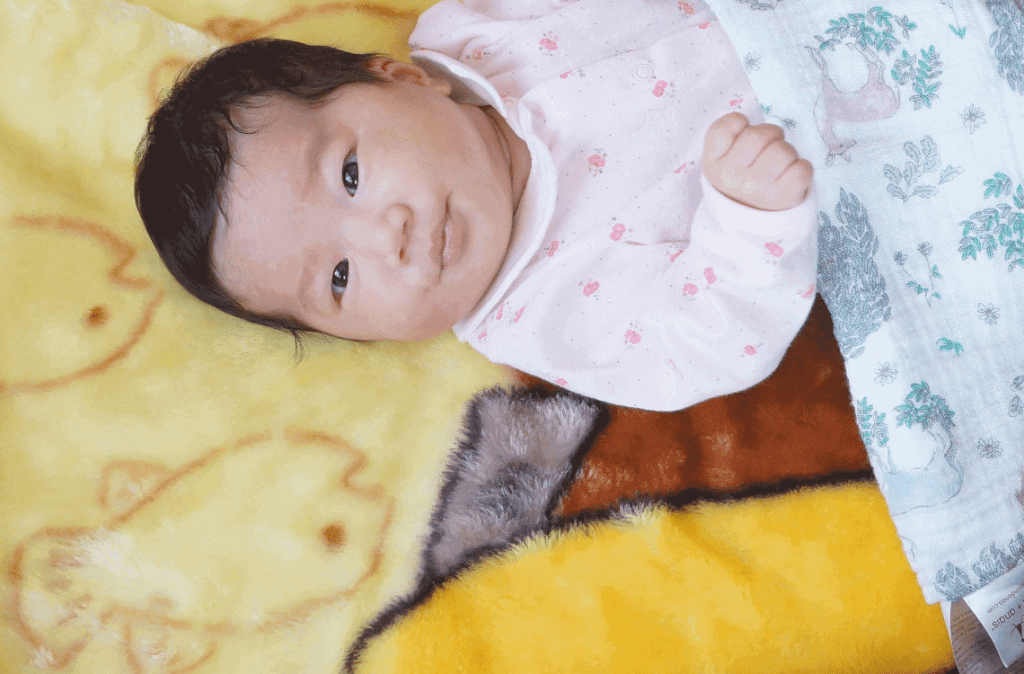After learning about your new baby on his newborn development milestones and one-month development milestones, are you ready for more exciting developmental milestones when he is two-month-old?
Let’s go!
By now, your baby would be able to stay awake for longer periods at a time. This means he is up to discover the whole new world more other than eating, sleeping and crying.
Here’s what you can expect from your baby this month.
Two-Month Developmental Milestones In Different Aspects
2-Month-Old Sleep
It’s common for your 2-month-old baby to sleep about 15.5 hours per day. He would have around seven hours of daytime sleep with three naps in between. Though he is able to sleep around eight a half hours at night, he might still wake up in the middle of the night.
If you wonder whether it’s time to sleep-train your baby, you can start with putting your baby in the crib whenever it is the nap time and bedtime. This is when the baby can learn to fall asleep by himself.
2-Month-Old Feeding
As you continue feeding your 2-month-old baby throughout the day, you might wonder how much he should eat.
Here’s some reference to ensure your baby’s well fed.
- If you are feeding your baby with formula, he should have four to five ounces every three to four hours.
- If you are breastfeeding your baby, he should be breastfed every two to three hours.
During this month, your baby should only consume breast milk or formula. No water is needed.
Since we have talked about what and how often you should feed your two-month-old, it’s equally important to look into his pooping, too. The question always revolves around how often he should poop.
Generally, your baby would poop once or twice a day if he’s formula fed. As for a breastfed baby, it would be similar as those formula fed babies or go up to seven days without pooping. Worry not, he is still in perfect health.
Additionally, here’s how you can identify whether your baby is having constipation or diarrhoea.
Mind that you should always consult your paediatrician to treat your constipated baby or to deal with diarrhoea instead of trying home remedies blindly.
Key Milestones in Growth
Here’s the average weight and height that you can expect from your 2-month-old baby.
- Weight: Around 5.13 kg for a 2-month-old baby girl and 5.58 kg for a 2-month-old baby boy
- Length: Around 57.15 cm for a 2-month-old baby girl and 58.4 cm for a 2-month-old baby boy
On top of this, your 2-month-old baby will gain around 4 cm in his head circumference.
However, these averages only serve as your reference because babies are more likely to grow in spurts.
Therefore, they might experience a slower period of growth.
Looking into growth, you might also realise that you baby’s nails are growing rapidly. So, you might wonder whether you can trim his nails.
Yes, you have to trim his fingernails once a week and his toenails about twice a month.
Here are some tips on how to care for your baby’s nails:
Key Milestones in Skill Development
In his second month, your baby will begin to develop several new abilities. Here’s what you can look forward to in terms of motor and social skills:
- Smiles and makes more facial expressions
- Briefly holds a toy or rattle
- Opens and closes his fists
- Uses his arms to lift his shoulders off the ground during tummy time
- Kicks stronger when he’s on his back
- Sucks his fingers more often
- Gurgles and coos more often
- Cries more frequently and for longer periods
- Can follow large and contrasting objects with his eyes
- Pays attention to faces
- He does not respond to loud sounds
- He doesn’t watch objects as they move
- He doesn’t smile at people
- He doesn’t brings hands to mouth
- He can’t hold his head up when he’s on his tummy
Helping Your Baby In His Two-Month Developmental Milestones
In helping your two-month-old baby to learn and grow, you can try out these six play ideas with him.
Additionally, if you wish that your baby can learn to look at himself, you can purchase and place a baby-safe mirror in his crib.
Look Forward to More Exciting Growth Moments With Your Baby
As your 2-month-old baby is now getting ready for more varied activities and toys, you will be amazed by how curious they are to explore their surrounding.
While ensuring that the toys are safe to be played by your baby, do remember to enjoy every moment with your baby as well.
So, let go of your worry and concern for a bit and just play with them.
Then, you would realise that no matter how hard your day has been, all it takes is your baby’s broad smile to make everything worth your effort and sacrifice!
You’ve got this, parents!
For more interesting stories and fun recipes, stay tuned to Motherhood Story!
